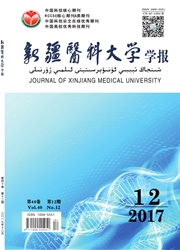

 中文摘要:
中文摘要:
目的 比较在加强黄体支持治疗的拮抗剂促排卵方案中使用促性腺激素释放激素激动剂(GnRHa)、重组绒毛膜促性腺激素(rHCG)诱导卵泡成熟治疗的安全性和有效性。方法回顾性分析2011年1月-2013年4月在新疆医科大学第一附属医院生殖医学科因输卵管因素行GnRH拮抗剂方案治疗的162个IVF周期,依据HCG日最终诱发卵泡成熟药物的不同分为两组:A组皮下注射GnRHa0.2mg诱导卵泡成熟,共74个周期(其中71个周期进行了新鲜胚胎移植);B组皮下注射rHCG250p-g诱导卵泡成熟,共88个周期(其中82个周期进行了新鲜胚胎移植)。两组常规于用药后35~36h取卵并于当日行IVF受精。所有患者自取卵日起每日常规肌注黄体酮60mg、口服地屈孕酮20mg支持黄体功能,A组患者于取卵后第2天、第4天加用HCG2000U肌注加强黄体支持。取卵后3d在超声引导下移植胚胎1~3枚。比较两组的获卵率、MⅡ 卵子率、受精率、优质胚胎率、临床妊娠率、周期取消率及OHSS发生率。结果两组获卵率、MⅡ卵子率、受精率、优质胚胎率、临床妊娠率差异无统计学意义(P〉0.05),A组周期取消率和OHSS发生率低于B组,差异有统计学意义(P〈0.05)。结论在加强黄体支持的GnRH拮抗剂促排卵方案中使用GnRHa诱导卵泡成熟可获得与rHCG相仿的获卵率、胚胎质量和临床妊娠率,但其可降低周期取消率和中重度OHSS发生率,故应用GnRHa诱导卵泡成熟是安全、有效的治疗选择。
 英文摘要:
英文摘要:
Objective To compare the effect and safety of gonadotropin-releasing hormone agonist (GnRHa) or recombinant human chorionic gonadotropin (rHCG) for triggering final oocyte maturation in luteal support strengthened GnRH Antagonist Regimens. Methods 112 patients who received GnRHa or rHCG for triggering final oocyte maturation in luteal support strengthened GnRH antagonist regimens were retrospectively analyzed. All patients received the therapy at the Reproductive Center of the First Affiliated Hospital of Xinjiang Medical University. According to different drugs used for triggering oocyte maturation, 112 patients were divided into 2 groups: Group A injected GnRHa 0.2mg with a total of 74 cycles (71 cycles received fresh embryo transfer) ; Group B injected rHCG 250ug with a total of 88cycles (81cycles received fresh embryo transfer). In every cycle, oocytes were retrieved 35--36 hours after triggering and were fertilized with IVF method. From the retrieving day, All patients daily received 60mg intramus- cular progesterone and 20mg dydrogesterone orally for luteal support. The 2nd and 4th day after the oocyte retrieval, the intramuscular HCG 2000U strengthened luteal support in patients using GnRHa. 1--3 em- bryos were transplanted 3 days after the oocyte retrieval. The number of oocytes retrieved, MⅡ oocyte rate, fertilization rate, clinical pregnancy rate, implantation rates, miscarriage rate and incidence of mod- erate/severe OHSS were compared between the two groups. Result The differences of the oocytes retrieval rate, M Ⅱ oocytes rate, fertilization rate, clinical pregnancy rate, implantation rates were not statistically significant between the two groups (P〉0.05), while the cycle cancellation rate and OHSS in- cidence were lower in GnRHa group than those of rHCG group (P〈0.05). Conclusion GnRHa replacing rHCG triggering oocyte maturation has the same effect in luteal support strengthened GnRH Antagonist Regimens while GnRHa has lower OHSS incidence rate and cycle cancellati
 同期刊论文项目
同期刊论文项目
 同项目期刊论文
同项目期刊论文
 期刊信息
期刊信息
